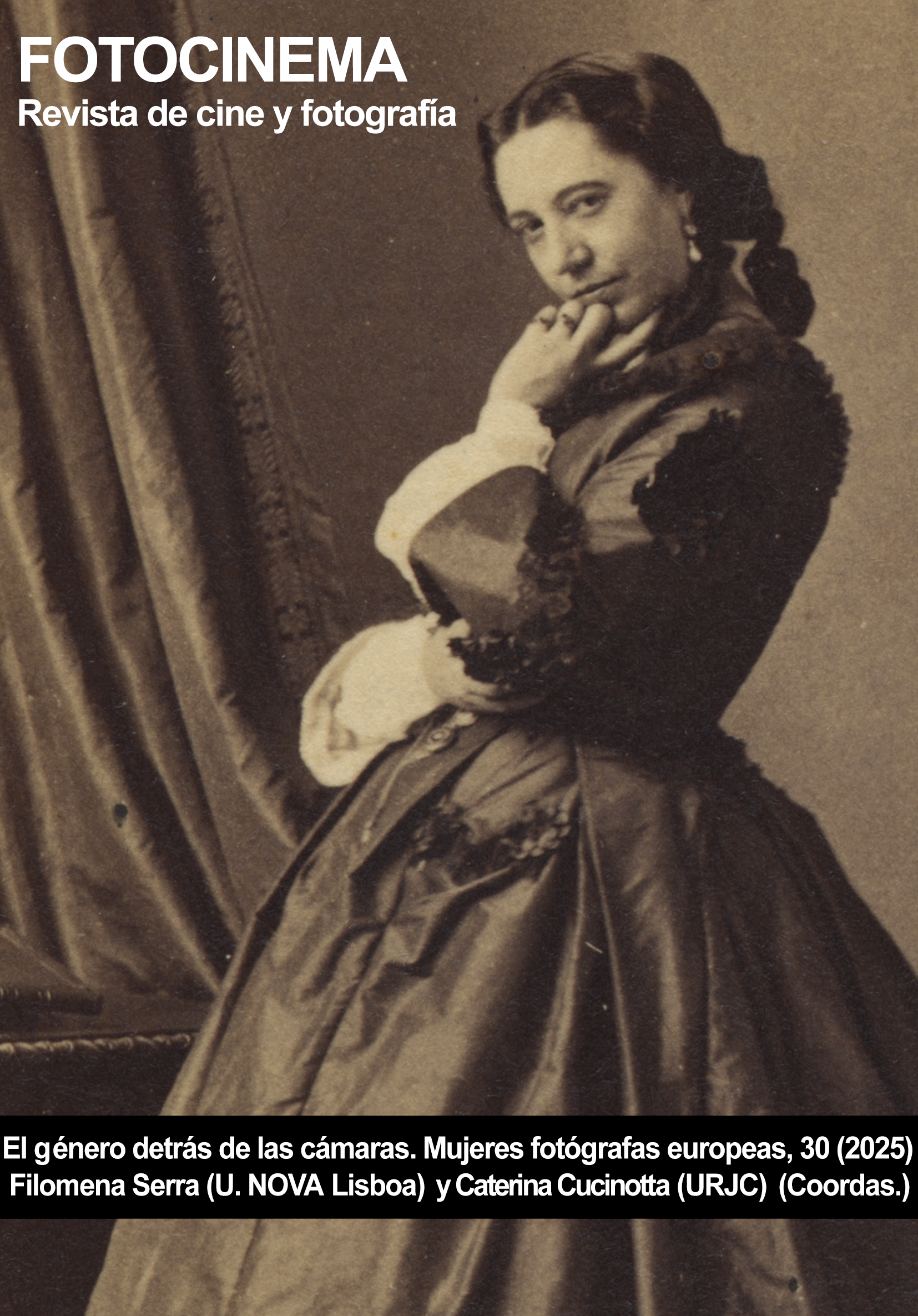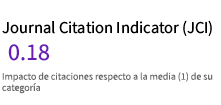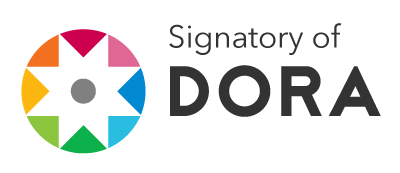Documentary photography, between evidence and creation.
Cristina García Rodero and Cristina de Middel
DOI:
https://doi.org/10.24310/fotocinema.30.2025.20580Keywords:
Photographic image, documentary photography, artistic expression, women photograhers, Cristina García Rodero, Cristina de MiddelAbstract
Cristina García Rodero (Puertollano, Ciudad Real, 1949) and Cristina de Middel (Alicante, 1975) represent two significant moments in the evolution of documentary photography in Spain. García Rodero, winner of the National Photography Prize in 1996, stands out for her ethnographic approach and her ability to capture the essence of Spanish traditions, as well as the disparate cultures of other countries. Her work documents and offers an in-depth look at customs, as well as the intimate moments and feelings that spontaneously spring from human beings. Cristina de Middel, winner of this same award in 2017, more than 20 years later, is recognised for her innovative vision, challenging the boundaries between reality and fiction. In addition to being members of the photographic agency Magnum Photos, the connection between the two photographers lies in their great influence on documentary photography. While García Rodero broke new ground with her traditional, documentary gaze, de Middel has taken the genre to new horizons, where the interpretation of reality and the potential of the image to offer new points of view play a crucial role. Both exemplify how documentary photography can be a medium for artistic expression and social commentary.
Downloads
Metrics
References
Alcocer, S. (29 de septiembre de 2015). La sociedad avanza y es cada vez menos machista; la fotografía no. El País. https://elpais.com/cultura/2015/01/31/actualidad/1422709948_935057.html
Arquero, I. y Deltell, L. (2021). Parodias en la fotografía actual: Chema Madoz, Joan Fontcuberta y Cristina de Middel. En M. Blanco y N. Parejo (Eds.), Historias de la fotografía, siglo xxi (pp. 185-205). Comunicación social ediciones y publicaciones.
Baeza, P. (agosto de 2009). Fotografía documental: decreto de crisis. Las imágenes controladas de los mercaderes. Le Monde diplomatique, https://mondiplo.com/fotografia-documental-decreto-de-crisis
Baque, I. (2019). España Oculta: Hidden Spain. Magnum Photos. In conversation with Irene Baque. https://www.magnumphotos.com/arts-culture/society-arts-culture/cristina-garcia-rodero-espana-oculta/
Barker, M. (2024). Verdades superiores y las llamadas mentiras: la autenticidad animada del documental. Revista de la Sociedad de Antropología Visual, 40(1), 25-38. doi: 10.1111/var.12315
Bersch, A. y Grant, L. (2011). De testigo a participante: la creación de un documental subversivo. En A. Freund y A. Thomson (Eds.), Oral History and Photography. Palgarve Studies in Oral History (pp. 187-201). Palgrave Macmillan. https://doi.org/10.1057/9780230120099_11
Berger, J. (1980). Ways of seeing. Penguin Books.
Bermúdez, R. (5 de junio de 2016). Cristina de Middel: “El fotógrafo y el artista tienen que dar su opinión, que no es la verdad”. Clavo ardiendo. https://clavoardiendo-magazine.com/mundofoto/entrevistas/cristina-de-middel/
Català, J. M. (2011). Reflujos de lo visible. La expansión post-fotográfica del documental. AdComunica. Revista Científica de Estrategias, Tendencias e Innovación en Comunicación, (2), 43-62. doi:10.6035/26
Cordero, D. (23 de abril de 2024). Cristina García Rodero, premio a la trayectoria profesional: “Las fotografías son el momento que le arranco a la muerte”. El País. https://elpais.com/comunicacion/2024-04-23/cristina-garcia-rodero-premio-a-la-trayectoria-profesional-las-fotografias-son-el-momento-que-le-arranco-a-la-muerte.html.
De Middel, C. (2017). The perfect man. La Fábrica editorial.
De Middel, C. (2012). The Afronauts. Self-published.
Di Bello, P., Wilson, C. y Zamir, S. (2012). The Photobook: From Talbot to Ruscha and Beyond. I.B. Tauris.
Fontcuberta, J. (2016). La furia de las imágenes. Notas sobre la postfotografía. Galaxia Gutenberg.
Fontcuberta, J. (2001). Joan Fontcuberta habla con Cristina Zelich. La Fábrica. Conversaciones con Fotógrafos.
Garcia, E. C. (2011). Photography as Fiction. Getty Publications.
García Rodero, C. (2023). Ser fotógrafa, un regalo de la vida. J de J Editores.
García Rodero, C. (1989). España Oculta. Lunwerg.
Guerrero Glez.-Valerio, B. (2019). Cristina García Rodero: España Oculta. Razón y Palabra, 23(106), 97-123. http://revistarazonypalabra.org/index.php/ryp/article/view/1485
Guerrero Glez.-Valerio, B. (2018). Fotografía documental y la utopía. Miguel Hernández. Communication Journal, 9(2), 293-307. https://doi.org/10.21134/mhcj.v0i9.251
Gubern, R. (2017). Medios formativos. En G. Indij y S. Silva (Comps), Clic! Fotografía y percepción (pp. 21-23). La marca editora.
Jeffrey, I. (1999). La fotografía. Ediciones Destino.
Lemagny, J. C. y Rouillé, A. (1988). Historia de la fotografía. Martínez Roca.
León, A. (2022). La ficción en la fotografía documental: Entrevista a Federico Estol. FOT, 5(2), 88–101. https://doi.org/10.19083/fot.v5i2.1751
Monge, A. (4 de septiembre de 2007). ¿Qué cambió Robert Frank en la fotografía? [Sesión de conferencia]. Alianza Francesa, Buenos Aires, Argentina. https://p.pdfdokument.com/1-que-cambio-robert-frank-en-la-fotografia-alberto-a-_5ee87759097c4733388b917a.html
Moreno Pachón, S. (30 de diciembre de 2000). Me gustaría que Madrid fuese lo menos ciudad posible. El País. https://elpais.com/diario/2000/12/30/madrid/978179071_850215.htm
Newhall, B. (2002). Historia de la fotografía. Gustavo Gili.
Ors, J. (27 de mayo de 2016). Cristina de Middel: “Me siento cómoda en los lugares sin ninguna identidad”. La Razón. https://www.larazon.es/cultura/cristina-de-middel-me-siento-comoda-en-los-lugares-sin-ninguna-identidad-LH12733594/#.Ttt1UrV8xbIqvQo
Panofsky, E. (1998). Estudios sobre iconología. Alianza Editorial.
Parreño, J. M. (2005). “Miradas de mujer”, 20 fotógrafas españolas. Museo de Arte Contemporáneo Esteban Vicente.
Peralta, M. y Menéndez, M. I. (2019). Cristina García Rodero y la fotografía documental: antropología visual en España Oculta. En F. J. García Ramos y U. Felten (Eds.), Fotografía (Femenino; Plural): visiones, ensayos y otros escritos sobre mujeres fotógrafas (pp. 65-90). Fragua.
Rouillé, A. (2017). La fotografía, entre documento y arte contemporáneo. Editorial Herder.
Sekula, A. (1984). Photography Against the Grain: Essays and Photo Works 1973-1983. College of Art and Design.
Solomon-Godeau, A. (2009). Photography at the Dock: Essays on Photographic History, Institutions, and Practices. University of Minnesota Press.
Sontang, S. (2005). On Photography. Rossetta Books.
Susperregui, J. M. (2000). Fundamentos de la fotografía. Universidad del País Vasco.
Torralba Gállego, B. (2017). Cristina de Middel y el fotolibro. Humor, subjetividad y libertad como distintivos de autoría. Proyecto I+D+i Mujeres artistas en España, 1804-1939. Financiado por Ministerio de Economía, Industria y Competitividad (MINECO), la Agencia Estatal de Investigación (AEI) y el Fondo de Desarrollo Regional (FEDER).
Torres-Mestey, V. y Do Montes Ribas, L. (2023). La paradoja de la fotografía: entre la supuesta realidad y la ficción inherente. Cuadernos del Centro de Estudios de Diseño y Comunicación, (191), 131-137. https://doi.org/10.18682/cdc.vi191.9551
Walker, I. (1995). Documentary fictions? Photography in the Visual Arts, Art and Design, (44), 1-8. https://ianwalkerphoto.com/wp-content/uploads/2015/10/Ian_Walker_Documentary_Fictions.pdf
Walzer, A. (2021). En torno a la definición de imagen como representación de la realidad. Doxa Comunicación. Revista Interdisciplinar de estudios de comunicación y Ciencias Sociales, (33), 39-51. https://doi.org/10.31921/doxacom.n33a924
Downloads
Published
How to Cite
Issue
Section
License
Copyright (c) 2025 BEATRIZ GUERRERO GLEZ-VALERIO, Laura González Díez

This work is licensed under a Creative Commons Attribution-NonCommercial-NoDerivatives 4.0 International License.
All contents published in Fotocinema Revista científica de cine y fotografía are protected under the Creative Commons Attribution-NonCommercial-ShareAlike 4.0 International (CC BY-NC-SA 4.0) license. All about this license is available in the following link: <http://creativecommons.org/licenses/by-nc-sa/4.0>
Users can copy, use, redistribute, share and exhibit publicly as long as:
- The original source and authorship of the material are cited (Journal, Publisher and URL of the work).
- It is not used for comercial purposes.
- The existence of the license and its especifications are mentioned.
There are two sets of authors’ rights: moral and property rights. Moral rights are perpetual prerogatives, unrenounceable, not-transferable, unalienable, imprescriptible and inembargable. According to authors’ rights legislation, Fotocinema. Revista científica de cine y fotografía recognizes and respects authors moral rights, as well as the ownership of property rights, which will be transferred to University of Malaga in open access. The property rights are referred to the benefits that are gained by the use or the dissemination of works. Fotocinema. Revista científica de cine y fotografía is published in an open access form and it is exclusively licenced by any means for doing or authorising distribution, dissemination, reproduction, , adaptation, translation or arrangement of works.
Authors are responsable for obtaining the necessary permission to use copyrighted images.













13.png)



